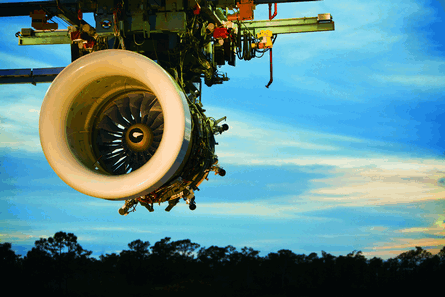Pratt & Whitney's early testing of the PW1000G GTF geared turbofan demonstration engine and fan drive gear system rig testing has confirmed significantly higher than predicted efficiency for the geared configuration.
As a result, oil temperatures - managed by air/oil heat exchangers - proved much lower than predicted allowing for the possibility of a smaller heat exchanger size than initially planned for the engine.
"Our engineers are taking all the learning from our rig and demonstration engine programmes to optimise weight as we move into product design. We are confident that the PW1000G will achieve our initially forecast weight reduction of 5-10% relative to a conventional engine architecture," says Bob Saia, P&W vice-president of the next-generation product family.
 |
|---|
© Pratt & Whitney |
P&W, which has worked for more than 15 years with partner companies in an effort to demonstrate the benefits of the configuration, says its latest studies of heat rejection on the GTF leads it to expect a reduction of heat energy from 2% to 0.5%. Details of the possible heat exchanger shrink were given at a recent Royal Aeronautical Society conference on airworthiness and maintenance in London.
Thermal management systems prevent oil overheating by providing sufficient cooling capacity of the fuel-cooled and air-cooled oil coolers. Key to that success is reducing heat rejection as far as possible by minimising fan drive gear system losses that provide an additional heat source for the oil system.
P&W is now preparing for its two-month, 75h flight-test programme of the GTF demonstrator on an Airbus A340-600 after completing the first phase of trials on its own Boeing 747SP flying testbed. Ground runs are expected to start next week, with flight testing due to start by early October. Detailed design work will then begin when this demonstrator flight testing is complete.
The GTF demonstrator on the Boeing aircraft accumulated 43.5h over 12 flights that demonstrated the handling characteristics and overall performance of the engine up to 40,000ft (12,200m) and Mach 0.85, exploring the full flight regime up to its safe RPM limit at 30,000lb thrust (134kN).
Source: Flight International



















